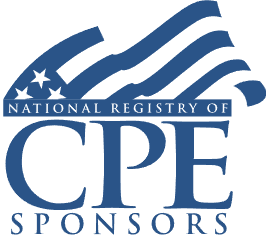Estate Planning for Retirement Benefits: IRS Final Regs, 10-Year Rule for IRAs, RMDs, Planning for Spouse and Minors
Changes under SECURE Act, SECURE 2.0, and Recent Regulations; New Distribution Rules after Death, Eligible Designated Beneficiary

Course Details
- smart_display Format
On-Demand
- signal_cellular_alt Difficulty Level
Intermediate
- work Practice Area
Estate Planning
- event Date
Wednesday, January 22, 2025
- schedule Time
1:00 p.m. ET./10:00 a.m. PT
- timer Program Length
90 minutes
-
This 90-minute webinar is eligible in most states for 1.5 CLE credits.
-
BARBRI is a NASBA CPE sponsor and this 110-minute webinar is accredited for 2.0 CPE credits.
This CLE/CPE webinar will guide trust and estate counsel on the complexities in estate planning in light of IRS final regulations regarding inherited individual retirement accounts (IRAs), required minimum distribution (RMDs), and trusts receiving retirement benefits. The panel will discuss key provisions impacting estate planning under the final regulations, changes stemming from the SECURE Act and SECURE 2.0, mechanisms to avoid pitfalls concerning inherited retirement benefits, plan transfers, required distributions, and other essential items to ensure optimum planning.
Faculty

Ms. Young focuses her practice in the area of trusts and estates law and taxation. She counsels individuals, families and family offices on estate planning matters and business succession planning, including income tax planning and retirement, marital and charitable planning. She works with RSM tax professionals nationally on trust administration issues and estate and trust planning for individuals, families and family offices. She resolves gift and estate tax return examinations at the state and federal level. She presents nationally at conferences on topical estate, trust and gift tax issues. Her planning expertise is concentrated on the income tax aspects of estate planning, including fiduciary income tax minimization strategies (state and federal), charitable planning, marital planning, retirement planning and opportunities presented by decanting.

Mr. Hemenway is a founding partner of Bivins & Hemenway, P.A. His educational background included substantial coursework in computer programming and systems design at both the undergraduate and graduate levels. Mr. Hemenwayserves as a trusted legal advisor to business owners, real estate investors, and families seeking to preserve and pass down their wealth and values. His practice focuses on estate planning and probate, small and closely held businesses, and real estate.
Description
On July 19, 2024, the IRS issued final regulations for the RMD rules. Effective as of Sept. 17, 2024, the final regulations reflect changes made by the SECURE Act and SECURE 2.0 impacting retirement plan participants, IRA owners, and their beneficiaries. In addition, the IRS issued proposed regulations addressing additional RMD issues under SECURE 2.0.
The final regulations provide clarity on the 10-year rule for inherited IRAs, including ensuring that inherited retirement accounts are withdrawn and taxed in a timely manner. Before the SECURE Act and SECURE 2.0, beneficiaries of inherited IRAs could choose a lump sum withdrawal or stretch the withdrawal of RMDs over their life expectancy. Under the final regulations and the 10-year limitation, trusts and estates counsel must carefully plan to minimize taxes and protect beneficiaries.
In addition, beneficiary designations and utilizing IRA trusts must be considered due to the fact that the final regulations include new terminology and definitions, the inclusion of eligible designated beneficiaries (EDB) and category options, and other key issues.
Listen as our panel discusses key provisions impacting estate planning under the final regulations, changes stemming from the SECURE Act and SECURE 2.0, and mechanisms to avoid pitfalls concerning inherited retirement benefits, plan transfers, required distributions, and other essential items to ensure optimum planning.
Outline
- Impact of IRS final regulations
- SECURE Act and SECURE 2.0
- Key terminology and definitions
- Changes under the proposed and final regs
- EDB categories
- RMDs
- The 10-year rule
- Planning strategies for surviving spouse
- Planning strategies for minors
Benefits
The panel will discuss these and other key issues:
- Key provisions under the IRS final regulations for retirement benefits
- Changes stemming from SECURE Act and SECURE 2.0
- New and complex distribution rules upon death
- EDB and category options
- What are the SECURE Act and SECURE 2.0 rules when using IRA trusts?
- Final regulations on RMDs
- How the RMD rules work in cases of IRA shelter/conduit trusts
NASBA Details
Learning Objectives
After completing this course, you will be able to:
- Ascertain key tax planning tools in light of IRS final regulations for inherited IRAs
- Understand the tax savings benefits of IRA trusts and key components to minimize taxes
- Identify applicable rules under the SECURE Act and SECURE 2.0 impacting IRA trust planning
- Ascertain tax planning methods in utilizing and structuring IRA trusts
- Determine how the SECURE Act affects distributions of IRAs to beneficiaries
- Identify common beneficiary designation errors
- Decide when to consider a trust as a beneficiary

Strafford Publications, Inc. is registered with the National Association of State Boards of Accountancy (NASBA) as a sponsor of continuing professional education on the National Registry of CPE Sponsors. State boards of Accountancy have final authority on the acceptance of individual courses for CPE Credits. Complaints regarding registered sponsons may be submitted to NASBA through its website: www.nasbaregistry.org.
Related Courses

Marital Deduction Planning and Portability: Problem Areas for Spouses, Second Marriages, QTIP Trusts, and Elections
Wednesday, April 2, 2025
1:00 p.m. ET./10:00 a.m. PT

Beneficiary Deemed Owner Trusts Under IRC 678(a)(1): Using BDOTs for Income Tax Savings and Simplification
Wednesday, April 2, 2025
1:00 p.m. ET./10:00 a.m. PT
Recommended Resources
Building Your Book: Strategies to Secure Long-Term Success
- Business & Professional Skills
- Career Advancement
- Talent Development